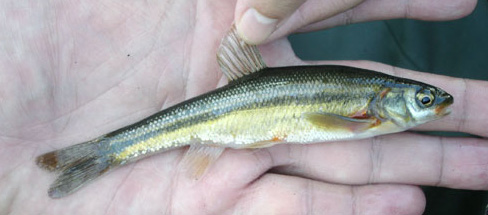EEB researchers investgate a way to predict vulnerability of species to climate change

U of T ecologists found the existence of the Ontario freshwater Lake Chub (above) threatened by predators whose range of habitats are expanding northward due to climate change (photos by Don Jackson/University of Toronto)
Research is published in Proceeding by Karen Alofs an EEB postdoc and Professor Don Jackson (EEB faculty and chair of EEB)
Abstract
Climate change threatens species directly through environmental changes and indirectly through its effects on species interactions. We need tools to predict which species are most vulnerable to these threats. Pairwise species associations and body size are simple but promising predictors of the relative impact of species introduced outside of their historical ranges. We examined the vulnerability of 30 fish species to the impacts of three centrarchid predators that are being introduced to lakes north of their historical range boundaries. Species that were negatively associated with each centrarchid in their historical range were more likely to be lost from lakes with centrarchid introductions. Total body length was most important in predicting impact for the most gape-limited predator. At the regional scale, our method identifies those species most vulnerable to introductions facilitated by climate change and can easily be applied to a range of taxa undergoing range expansions.
- See U of T News coverage
- View publication online Proceedings of the Royal Society B Published 15 July 2015
- Alofs, Karen M., Jackson, Donald A. (2015) The vulnerability of species to range expansions by predators can be predicted using historical species associations and body size.
Proceedings of the Royal Society of London B: Biological Sciences. 282, 1812. doi:10.1098/rspb.2015.1211 pdf
